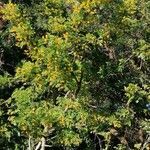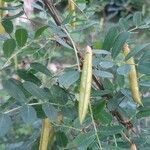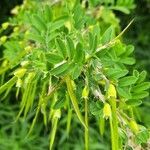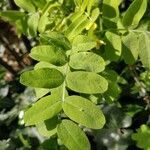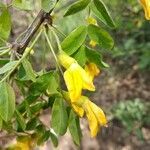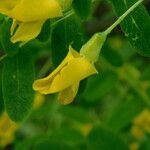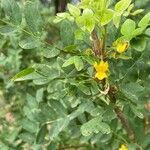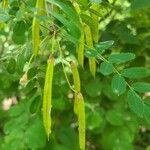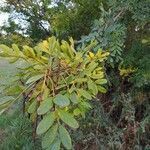A shrub or small tree. It grows 3.5-6 m high. It loses its leaves during the year. The leaves are soft and spineless. They are alternate and compound. There are 8-12 green leaflets. The central stalk is 4-8 cm long. The leaflets are oval and 12-25 mm long. There are small spines at the base of each leaf. The flowers are pale yellow and occur in loose clusters. They are pea like. They have slender stalks. The fruit is a pod. It is 4-5 cm long and swollen. It splits open with a twist when ripe. It contains many seeds.
